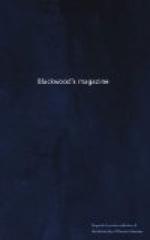Antonio, however, was so unconcious of the “world without,” that he started not at this sudden interruption of the previous stillness. Regardless, too, of the serious and indeed reproving tone of the old man’s voice, he hastily replied without averting his gaze from the canvass. “Hush, maestro! I beseech you. Question me not, for Heaven’s sake! I cannot spare a word in reply. The original,” continued he, after a brief interval of close attention to his object, and drawing as he spoke; “the original is still firmly fixed in my memory. I see its sharp outlines clear within me, and, as you well know and oft have told me, a feature lost is lost for ever. Alas! alas! those lines and angles around the mouth are already fading into shadow.”
After he had thrown out these words, from time to time, like interjections, and with Venetian rapidity of utterance, nothing was audible in the saloon for some minutes but the young artist’s sharp and rapid strokes upon the canvass.
“No more of this, Antonio!” at length exclaimed the old painter with energy, after gazing for some time at the gradual appearance of an old woman’s lean and winkled features, dried up and yellow as if one of the dead, and yet lighted up by a pair of dark deep-set eyes, which seemed to blaze with supernatural life and lustre. At each touch of the artist, this mummy-like and unearthly visage was brought out into sharper and more disgusting relief, when Contarini, no longer able to control his indignation, dashed the charcoal from his pupil’s hand. “Apage, Satanas!” he shouted, “thy talent hath a devil in it. I see his very hoof-print in that horrible design.”
Startled by this unexpected violence, the young artist turned round, and beheld with amazement the usually benign featutes of his venerable teacher flashing upon him with irrepressible anger, which was the more impressive because the Cavaliere had just returned from a visit to the Doge, and was richly attired in the imposing patrician costume of the period. Around his neck was the golden chain hung there by the imperial hands of Rodolph the Second, and he wore the richly enameled barret, and lofty heron’s plume, which the same picture-loving emperor had placed upon his head when he knighted him as a reward for the noble pictures he had painted in Germany. There was a true and fine air of nobility in his lofty form and well-marked features—a character of matured thought and intellectual power in the expansive brow, and in the firm gaze of his large dark eyes, as yet undimmed by age—with evidence of decision and self-respect, and habitual composure in the finely formed mouth and chin. Thus splendidly arrayed, and thus dignified in form, features, and expression, this distinguished man recalled so powerfully to the memory of his imaginative pupil the high-minded doges of the heroic period of Venice, and the imposing portraits of Titian’s senators, that, with a deep sense of his own moral inferiority, he obeyed in silence, and with starting tears removed the offending sketch. Then placing before him a small picture of a weeping and lovely Magdalen by Contarini, which he had undertaken to copy, he began the sketch, patiently awaiting a voluntary explanation of this unwonted vehemence in his beloved teacher, who, seated in his armchair, leaned his head upon his hand and seemed lost in thought.




